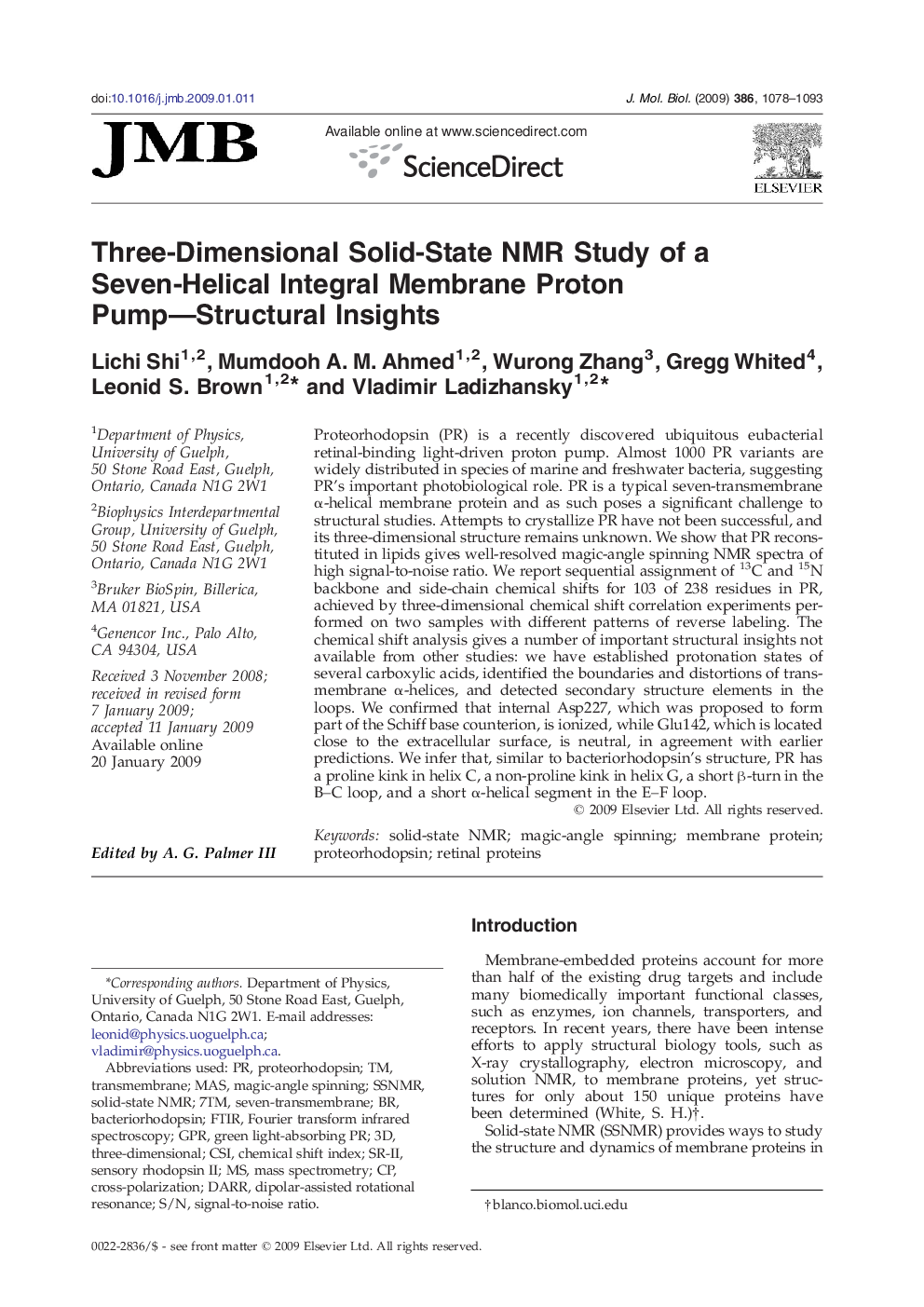| Article ID | Journal | Published Year | Pages | File Type |
|---|---|---|---|---|
| 2186714 | Journal of Molecular Biology | 2009 | 16 Pages |
Proteorhodopsin (PR) is a recently discovered ubiquitous eubacterial retinal-binding light-driven proton pump. Almost 1000 PR variants are widely distributed in species of marine and freshwater bacteria, suggesting PR's important photobiological role. PR is a typical seven-transmembrane α-helical membrane protein and as such poses a significant challenge to structural studies. Attempts to crystallize PR have not been successful, and its three-dimensional structure remains unknown. We show that PR reconstituted in lipids gives well-resolved magic-angle spinning NMR spectra of high signal-to-noise ratio. We report sequential assignment of 13C and 15N backbone and side-chain chemical shifts for 103 of 238 residues in PR, achieved by three-dimensional chemical shift correlation experiments performed on two samples with different patterns of reverse labeling. The chemical shift analysis gives a number of important structural insights not available from other studies: we have established protonation states of several carboxylic acids, identified the boundaries and distortions of transmembrane α-helices, and detected secondary structure elements in the loops. We confirmed that internal Asp227, which was proposed to form part of the Schiff base counterion, is ionized, while Glu142, which is located close to the extracellular surface, is neutral, in agreement with earlier predictions. We infer that, similar to bacteriorhodopsin's structure, PR has a proline kink in helix C, a non-proline kink in helix G, a short β-turn in the B–C loop, and a short α-helical segment in the E–F loop.
